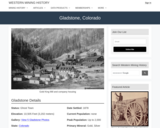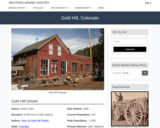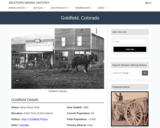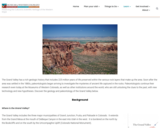We use these Google Earth Exercises (GEE) in the undergraduate structural geology course. Students construct a complete geologic map of each 'field area' outside of class; in class, the students display their map and discuss their observations, interpretations, assumptions, and reasoning. This exercise promotes discussion among the students, and also provides students with the opportunity to develop speaking skills, as well as 'on-your feet' reasoning and analysis. Mapping can be done digitally using graphic software such as Adobe IllustratorTM or using hard copy images and overhead transparencies. (Digital mapping requires that the students have knowledge of working with, and access, to a graphics program such as Adobe IllustratorTM). Students also draw stratigraphic columns and cross-sections as needed; and they determine a relative sequence of events for each 'field' area. Cross section lines are included in the .kmz (Google Earth) file (not on the map images). This allows the instructor to move cross-section locations as needed. We have 3-4 students display and discuss maps for each exercise (usually takes about 30-45 min.); we encourage student to question their classmates; with time, our encouragement becomes less necessary. We have students construct geologic maps on transparencies and display the maps via an overhear projector keeping the LCD projector free to run Google Earth. Students can use Google Earth (flying to specific locations, or zooming in and out, or viewing specific locations from different perspectives) during their presentation to illustrate or support their interpretation, and logic path that lead to that interpretation to the class. This provides the opportunity for students to see how different people interpret the same area; they also learn that although each maps is different, each map tells a similar story; that is first-order relationships emerge from the family of maps constructed by their fellow classmates. After each discussion, all of the students display their maps on a side table in the classroom, providing the students with the opportunity to compare all of the maps of the same area. As a result they clearly see that all maps are different, yet each can be valid, and they also see how others handled both geologic relations, and, at a more basic level, clarity and neatness in presentation. As the semester progresses we see a sharp increase in the quality of the maps, both geologically and in terms of clarity and neatness, likely a direct result of students both viewing their classmates maps, and having their maps viewed by classmates. Peer pressure can be a wonderful learning tool.
Each exercise focuses on a different area. An individual exercise or any combination of exercises maybe used at the instructor's discretion to compliment topics in either lecture or lab. The exercises, as presented, are ordered in such a way that they take the student progressively from relatively straightforward map areas to increasing complicated map areas. We begin the geologic mapping sequence using a Venus mapping exercise available on the SERC site http://serc.carleton.edu/NAGTWorkshops/structure04/activities/3875.html in order to get the students to feel comfortable identifying and delineating patterns; we develop concepts about material units versus structural elements (and in some cases primary verses secondary structures; please see the Venus exercise for the range of students goals, which we do not repeat here). The first Google Earth Exercise, (GEE1) follows the SERC exercise 'Visualizing Inclined Contacts' by Barbara Tewksbury http://serc.carleton.edu/NAGTWorkshops/structure/visualizing_inclined.html . Our GEE1 exercise is included below with all credit to Barbara Tewksbury. Subsequent exercises (GEE2, GEE3, etc.) include: faults and topographic interactions; folds and topographic interactions; faults and crosscutting dikes; refolded folds. These exercises may be used in any order and/or positioning within a course. We find that both the repetition of GEE exercises, and the progression of increasing complexity of the exercises, allow the students the opportunity to develop their individual skill sets. Although mapping can be completed by the students during, or outside of class time, we find that having the students do this outside class allows each student the opportunity to move at their own pace, which seems important for our students and their learning. Discussion during class time is a critical part of the learning process.
These exercises can be easily replicated for your favorite field area or an area your think exemplifies an instructive structural style. We encourage other educators to apply this idea to other areas and submit the new Google Earth Exercises to SERC as well.
(Note: this resource was added to OER Commons as part of a batch upload of over 2,200 records. If you notice an issue with the quality of the metadata, please let us know by using the 'report' button and we will flag it for consideration.)








